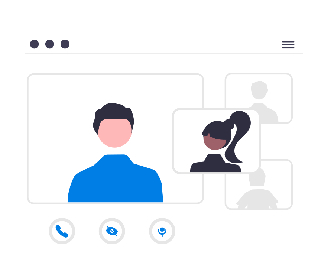Cultural Fit Meaning
Cultural fit refers to how well an employee's values, work style, and personality align with an organization's core values and workplace environment. It's the degree to which a person naturally integrates into a company's existing culture.
Cultural fit matters because employees aligned with organizational values tend to be more engaged, productive, and loyal. They embrace the company's mission and work seamlessly within established norms. Strong cultural alignment reduces onboarding friction, accelerates team integration, and decreases training requirements. Most importantly, employees with cultural fit stay longer, reducing the 50-200% cost of replacing employees annually.
TL;DR - Summary!
- What it is: Cultural fit is how well an employee's values, work style, and personality align with your organization's culture and values.
- Why it matters: Employees with strong cultural fit are more engaged, productive, loyal, and integrate seamlessly into teams, reducing turnover costs.
- Real impact: A tech startup values innovation and risk-taking; an employee with cultural fit embraces rapid experimentation. A law firm values precision; cultural fit means attention to detail and relationship-building.
- Key distinction: Cultural fit (alignment with existing values) vs. Culture add (bringing fresh perspectives). The best approach balances both.
- The risk: Hiring only for cultural fit can create homogeneous teams lacking diversity and inadvertently perpetuate bias. Separate cultural fit from personality preferences.
- Best practice: Define cultural fit by core values (integrity, collaboration, quality), not surface traits. Use diverse hiring panels. Actively seek candidates who add new perspectives while respecting core values.
Why Is Cultural Fit Important in Hiring?
Engagement and Retention
Employees with strong cultural fit experience higher job satisfaction because their values align with organizational priorities. This alignment reduces conflict and increases engagement. They're more likely to stay longer, reducing expensive turnover costs. Teams with aligned values communicate more effectively and collaborate naturally, boosting productivity.
Research consistently shows that employees with high cultural fit experience 23% higher productivity rates and remain with organizations 3-5 years longer than those with poor cultural fit. When employees feel their personal values align with organizational direction, they move from compliance (doing what's required) to commitment (doing what's needed).
Team Dynamics and Innovation
Cultural fit influences how new hires integrate with existing team members. Employees sharing organizational values create stronger team cohesion and improved communication. Teams with strong cultural alignment work more efficiently because they don't waste energy navigating conflicting values. However, this efficiency must be balanced with fresh perspectives---teams with exclusively similar cultural profiles can become stagnant and resistant to necessary change.
What Are Examples of Good Cultural Fit in Organizations?
A fast-paced tech startup values innovation and rapid experimentation. Employees with cultural fit embrace bold ideas, learn from failures, and adapt constantly. They thrive in ambiguity. When building these teams, organizations rely on a strong hiring strategy to identify adaptive candidates.
A traditional law firm values precision and client relationships. Cultural fit means attention to detail, respecting hierarchy, and prioritizing accuracy over speed. These employees take pride in craftsmanship and building enduring partnerships.
A nonprofit focused on social impact values mission-driven work and collaboration. Cultural fit means employees are motivated by impact over compensation and feel personally connected to the organization's cause.
Cultural Fit Vs. Culture Add --- What's the Difference?
| Aspect | Cultural Fit | Culture Add |
|---|---|---|
| Definition | Aligns employees' values and work styles with existing organizational norms. | Brings fresh perspectives, diverse backgrounds, and new ways of thinking while respecting core values. |
| Focus Question | 'Do they fit our culture?' | 'What unique value could they add to our culture?' |
| Primary Goal | Preserve organizational consistency and accelerate integration. | Enrich the organization by introducing new perspectives that challenge assumptions and foster innovation. |
| Advantages | Ensures smooth onboarding, team cohesion, and consistent behavior aligned with company norms. | Encourages innovation, diversity of thought, and adaptability in dynamic business environments. |
| Potential Drawbacks | Can lead to homogeneity and limit diversity of perspectives. | If not aligned with core values, may create cultural friction or confusion. |
| Required Expertise | Strong alignment with the company's existing behavioral norms, communication style, and work ethics. | Cross-industry experience, exposure to varied team dynamics, and the ability to respectfully challenge norms and introduce new practices. |
| Optimal Approach | Hire for fit on core values (integrity, accountability, ethical behavior) while maintaining operational harmony. | Seek individuals who align on foundational values but add diversity in thought, experience, and problem-solving approaches, fostering creative tension and innovation. |
| Illustrative Example | Hiring someone who already aligns with the company's collaborative work culture. | A fintech firm values 'customer-first innovation.' Hiring a candidate from the healthcare sector who brings empathy-driven design thinking expands how the company innovates for its users. |
Can Hiring for Cultural Fit Lead to Bias?
The Risk of Homogeneity
Yes. Exclusive cultural fit hiring creates homogeneous teams lacking diverse perspectives. When cultural fit becomes 'people like us,' organizations risk hiring only similar demographics, inadvertently perpetuating discrimination. This can impact attrition rate when underrepresented employees feel they don't belong.
Mitigation Strategies
- Separate cultural fit from personality preferences. Evaluate alignment with core values (integrity, collaboration, quality), not surface traits. Different people can embody values differently.
- Define criteria explicitly. Instead of vague impressions, identify measurable values alignment: 'demonstrates commitment to continuous learning' or 'seeks input before deciding.'
- Ensure diverse hiring panels. Different panel members challenge each other's biases and notice different strengths.
- Actively seek culture add. Welcome candidates whose different backgrounds strengthen your organization. A team of engineers benefits from design or psychology perspectives.
Ready to Improve Your Hiring Process? Discover how Qandle's HRIS platform helps you assess cultural fit while building diverse teams. Learn how to balance cultural fit and create teams that are both aligned and innovative.


 Back to Glossary
Back to Glossary